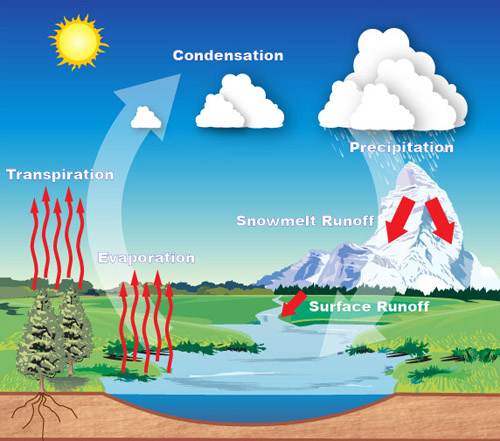In refrigeration work, the physics of latent heat is of special importance because it is this heat which produces constant cold or freezing temperatures. When ice melts, its temperature remains constant; nevertheless, it absorbs a considerable amount of heat changing from ice to water. The heat absorbing quality (the latent heat of fusion) of melting ice was the source of refrigeration in the iceboxes used many years ago. It is still the cooling medium when ice cubes or crushed ice are used to cool beverages.
When a substance passes from a liquid to a gas as in a mechanical refrigerator, its heat absorption is very high, and advantage is taken of this fact in the operation of the refrigerator.
The temperature level at which a substance changes its state depends on the pressure. The higher the pressure, the higher the temperature needed to make the change of state take place. Also, if the pressure is lowered, the temperature at which the change of state will take place will also be lowered. For example, water will turn to steam at 212 F. at 14.7 psia, 300 F. at 67 psia, 400 F. at 247 psia, 40 F. at .12 psia.
If low pressure is produced over a liquid it will boil at a lower temperature and if the gas resulting from this boiling is then compressed it will condense to a liquid at a higher temperature.
Every substance has a different latent heat value to bring about a change of state for both solid-liquid and liquid-gaseous states. Latent heat for water and the more common refrigerants are shown in Fig. 1-17. See Chapter 9 for information concerning refrigerants.
In a modern refrigerator, freezer, or air conditioner, liquid refrigerant is piped under pressure into the evaporator coil. In the evaporating coil, the pressure is greatly reduced and the refrigerant boils (changes to a gas) and absorbs considerable heat from the coil. This produces a low temperature and cools the evaporating coil. This refrigerant gas is pumped out of the coil and again compressed. It then flows into the condenser which is located outside of the refrigerator where the heat that is absorbed in the evaporator coil is released "squeezed out" to the surrounding atmosphere and the refrigerant returns to a liquid again and the cycle is repeated.
Tags:
Basics of Refrigeration
